Serves 4+
Level of difficulty 2.75
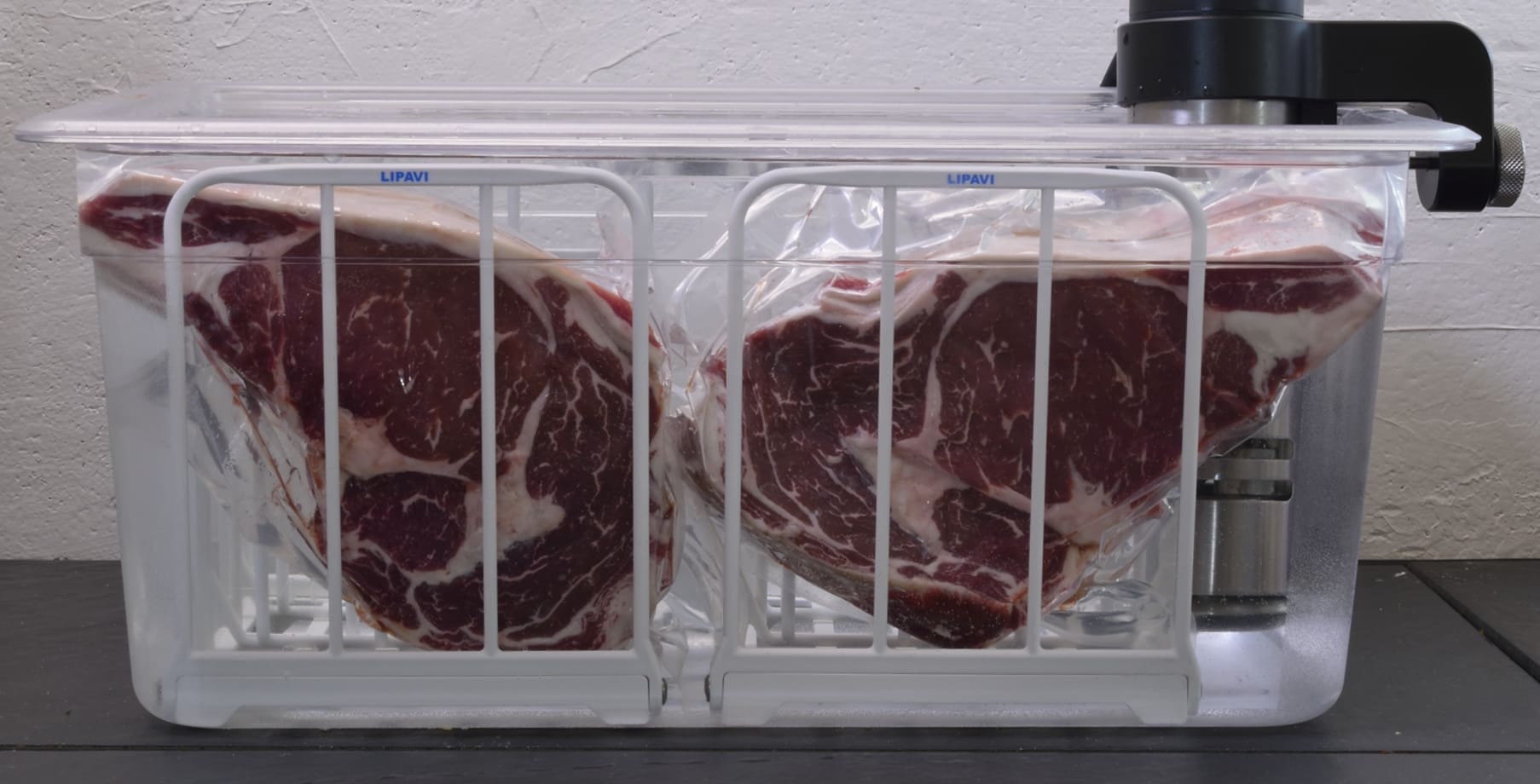
Procedure:
How do you like your steak?
Here are some basic appearance of doneness guidelines:
Rare: 129 F/54 C.
Medium rare: 132 F/55 C
Medium: 140 F/60 C.
Medium well: 145 F/63 C.
Well done: 150 F/66 C.
Preheat the water in your sous vide bath to the temperature that most closely matches your preference. For this demonstration, we used 129 F/54 C. We recommend that the temperature setting used should be the LOWEST degree of doneness preferred by the people at the table. At service, appearance of doneness can be increased while searing the steak “in the pan.” However, it cannot be reversed!
Preheat the sous vide bath to
129 F/54 C (or your preferred temperature setting as explained above).
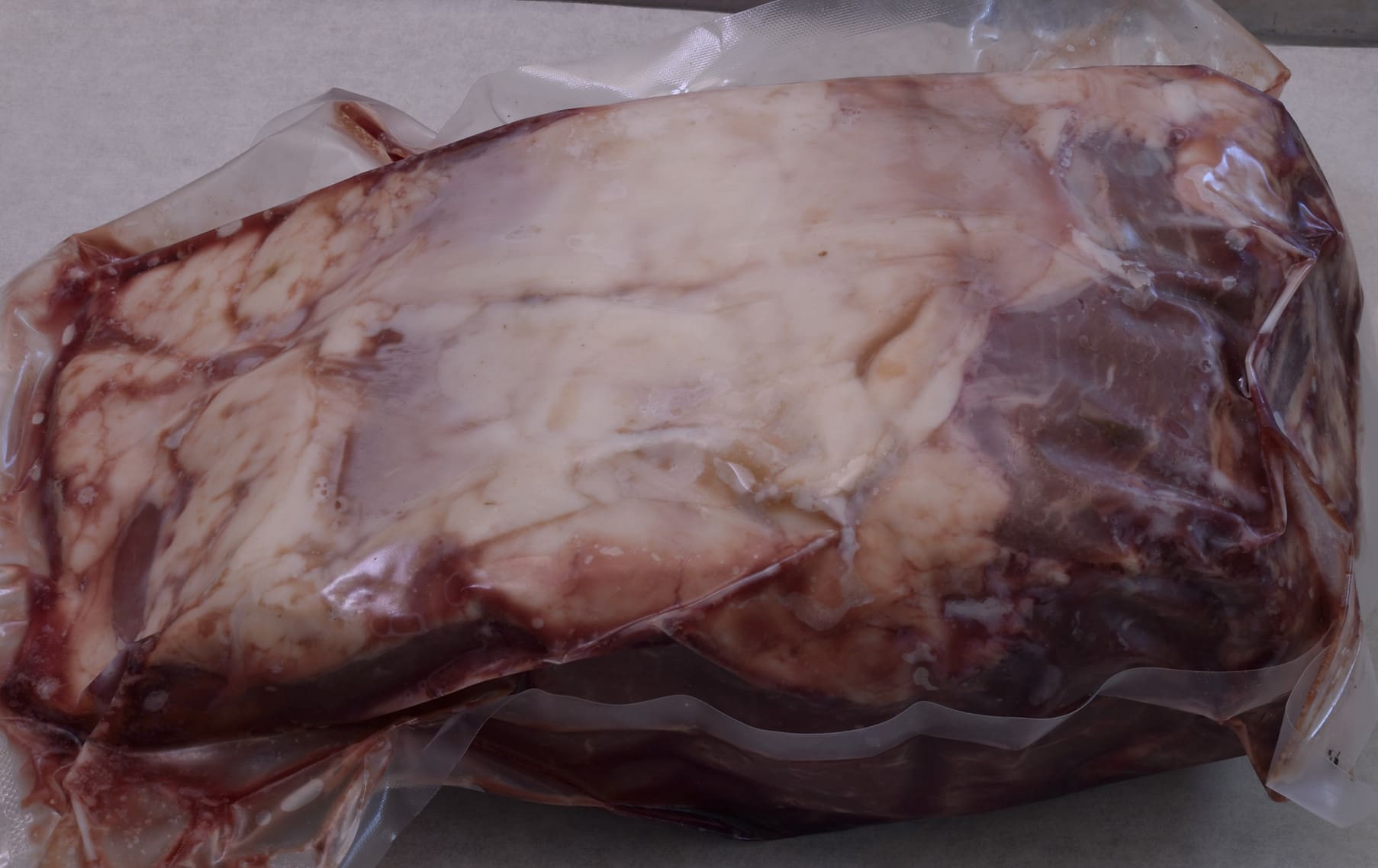
Stage the roast into a heat rated bag and sous vide process fully submerged for 8-12 hours–whichever is more befitting your personal convenience. Sous vide intervals are very forgiving and the difference in outcome between the two times (in this case) is negligible if even detectable at all. At such a low temperature, collagen is converted to gelatin at an extremely slow rate. This means we needn’t worry about the roast becoming “over-tenderized.” The purpose of the long interval is to achieve uniform appearance of doneness at service. This long interval will also serve to pasteurize the roast! More on that in the upcoming Option#2, where we will discuss how to shock the preserved roast all the way to 40 F/4 C for future use.
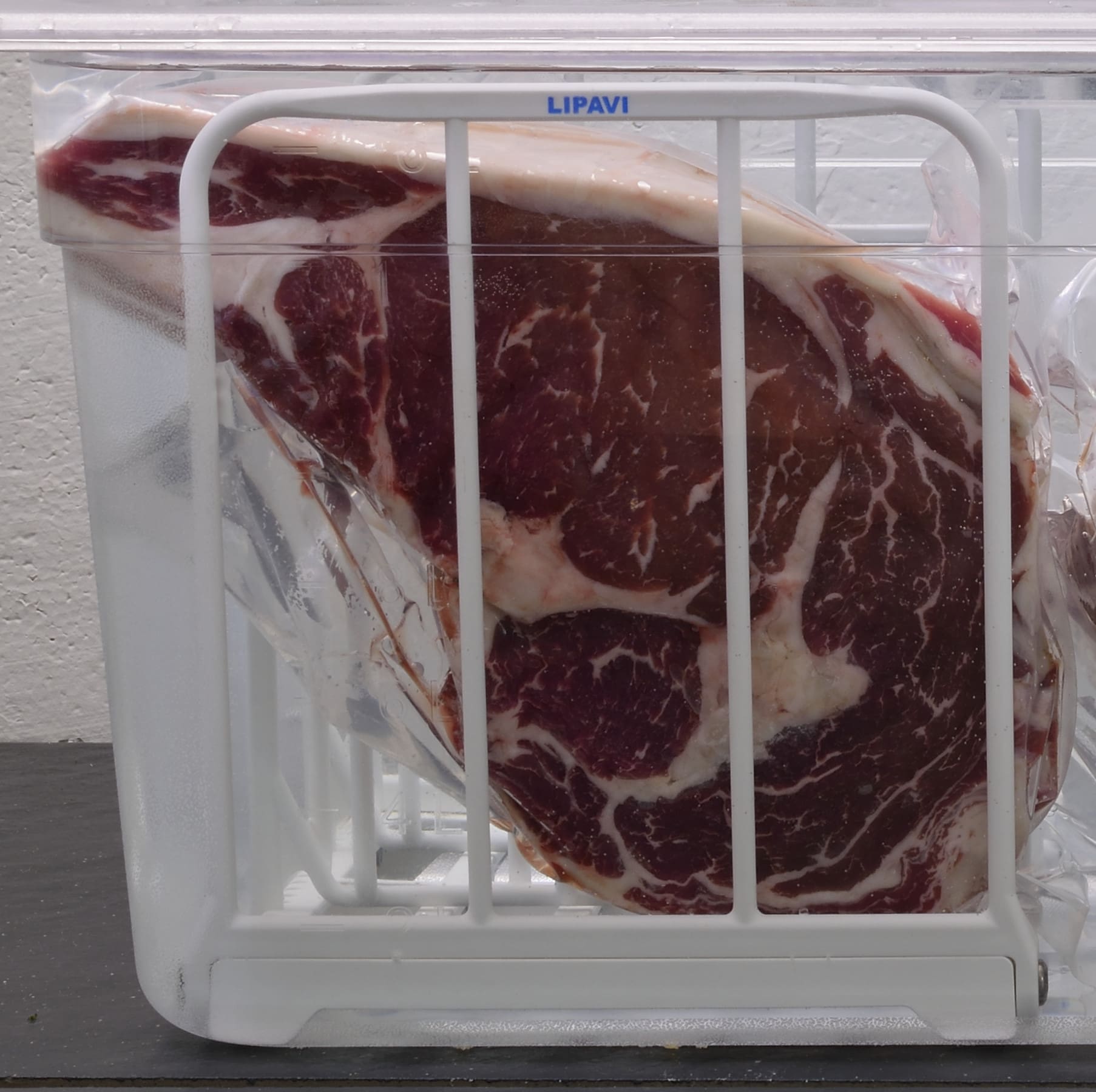
Put the roast in the bath in the morning (assuming you get up in the morning!), before you go to work (assuming you work). When dinner time arrives and once all your other menu items are prepared, you are no more than half an hour away from serving perfectly cooked steaks to your friends or family.
Temperature management–a delicate balance
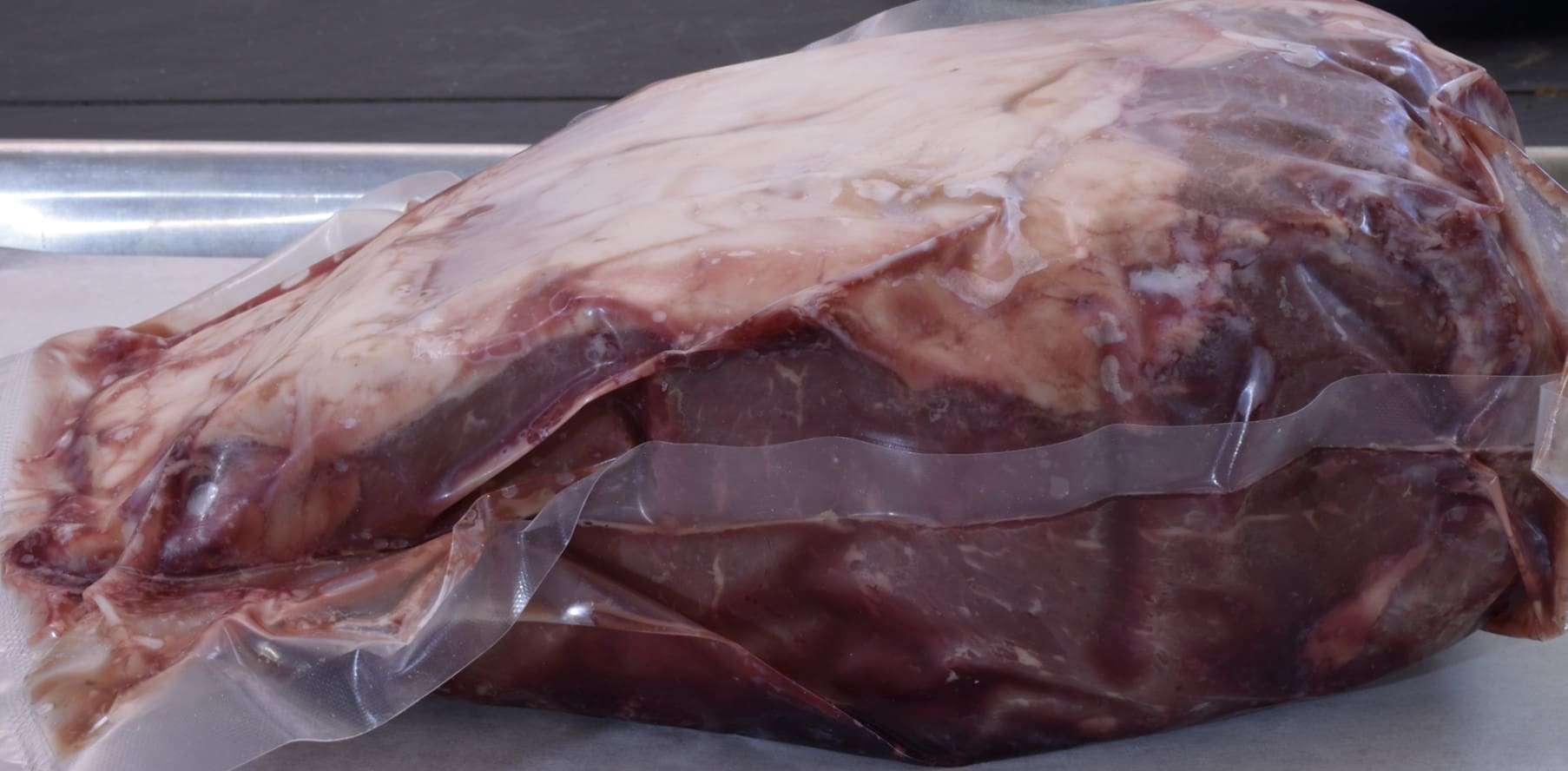
After 8-12 hours, remove the roast from the bath. Do NOT remove the roast from the package. The roast will be soft to the touch and difficult to handle at its current temperature. Submerge the package in at least 1 gallon/4 L cold (70 F/21 C) tap water for 15 minutes. This will reduce the temperature of the roast to approximately 85 F/30 C. Remove the package from the cold water and set on a clean surface–I like to use butcher paper on a cutting board. Cut a corner of the package and drain out the juices. These can be discarded or saved and utilized according to the method linked HERE.
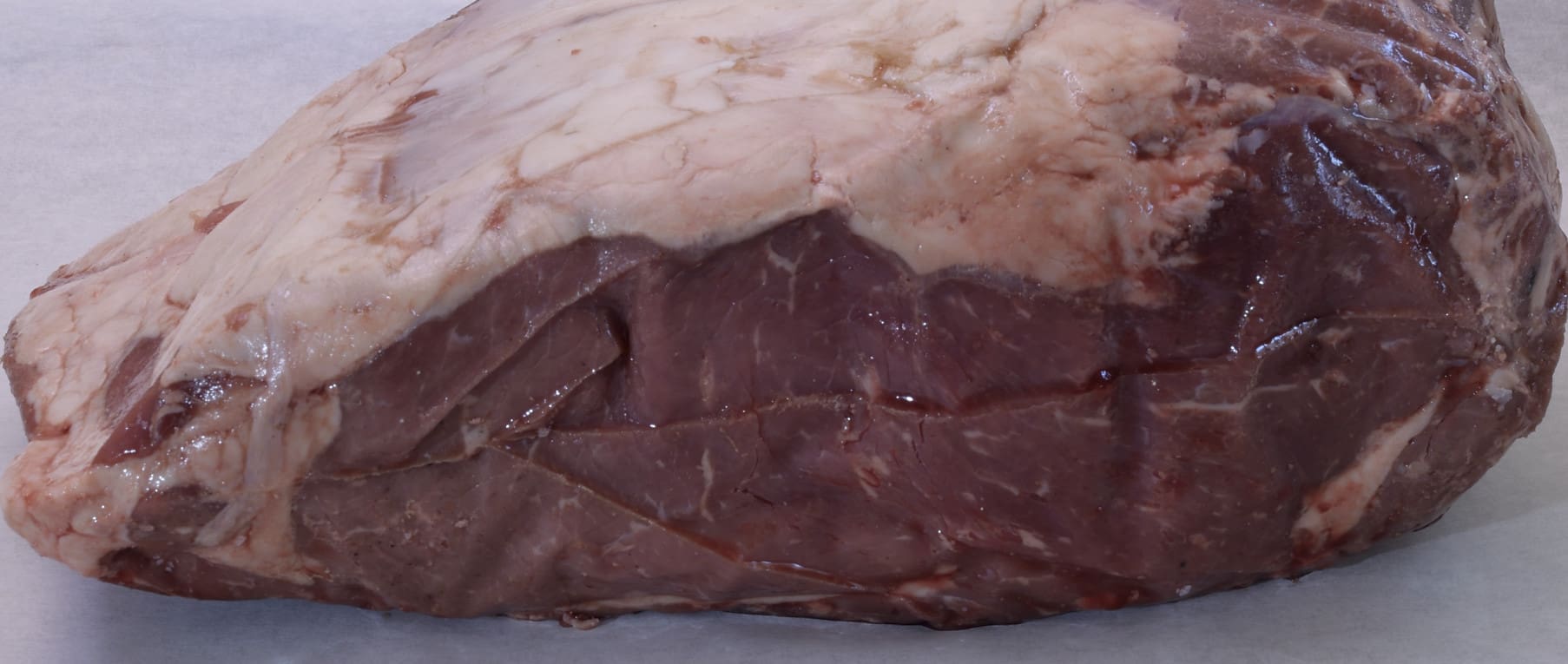
Use paper towels to pat the roast dry.
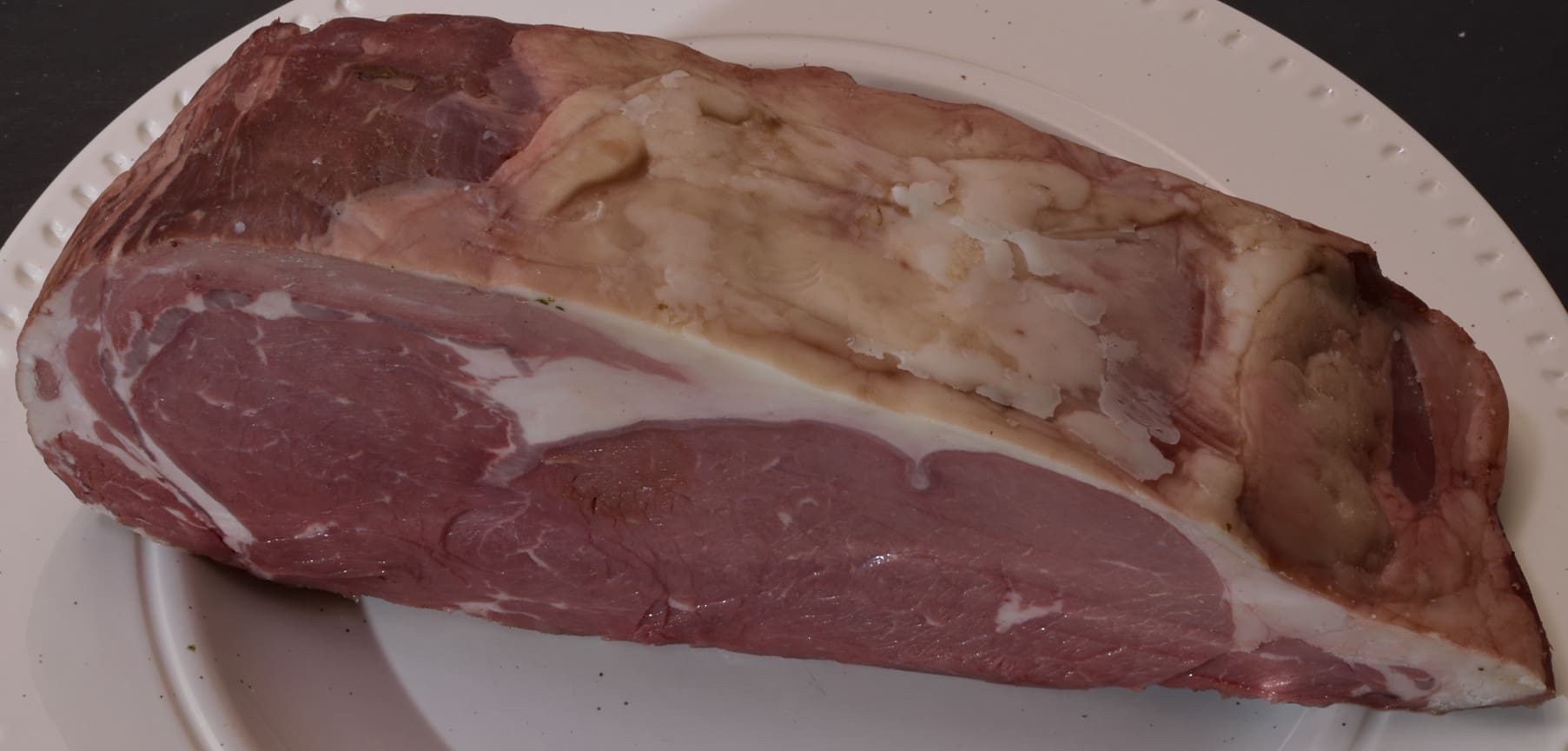
Cut the roast into steaks of the desired sizes. Carefully remove excess surface fat from each individual steak (if desired)–usually just a little bit from the top and the area at the far right. Many chefs leave rib eye steaks fully intact. If you wanted a lean steak, you should have processed a filet!
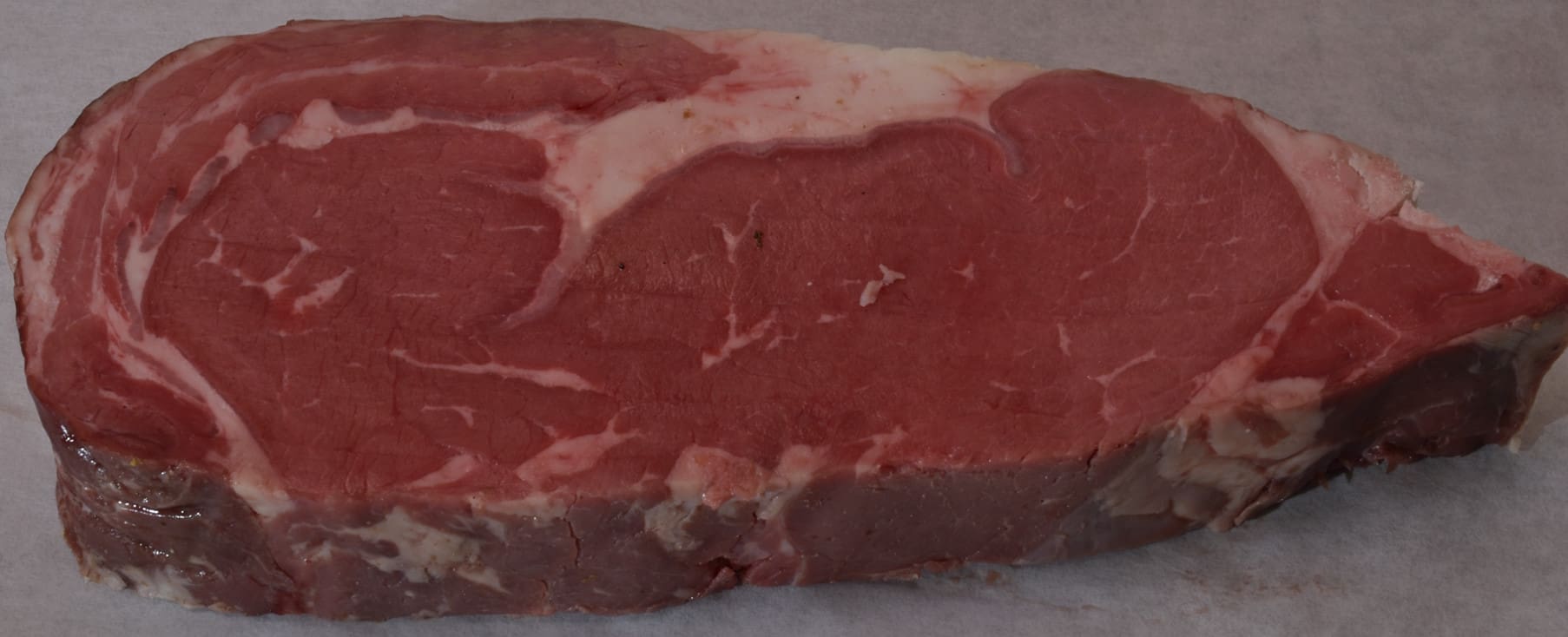
This steak is 18 oz/500 g, which means the roast would yield 4 steaks of this weight.
Note: To people new to sous vide, this steak will look raw, but it is not. This is one of the many unique features of sous vide processing. Great for Carpaccio!
Albumin proteins (similar to egg whites) are responsible for the shiny, sticky surface on fresh meat. Sous vide processing dissolves some of the albumins into the pouch–if you bring those juices to a boil, the albumins will coagulate and create visible white “dots.”
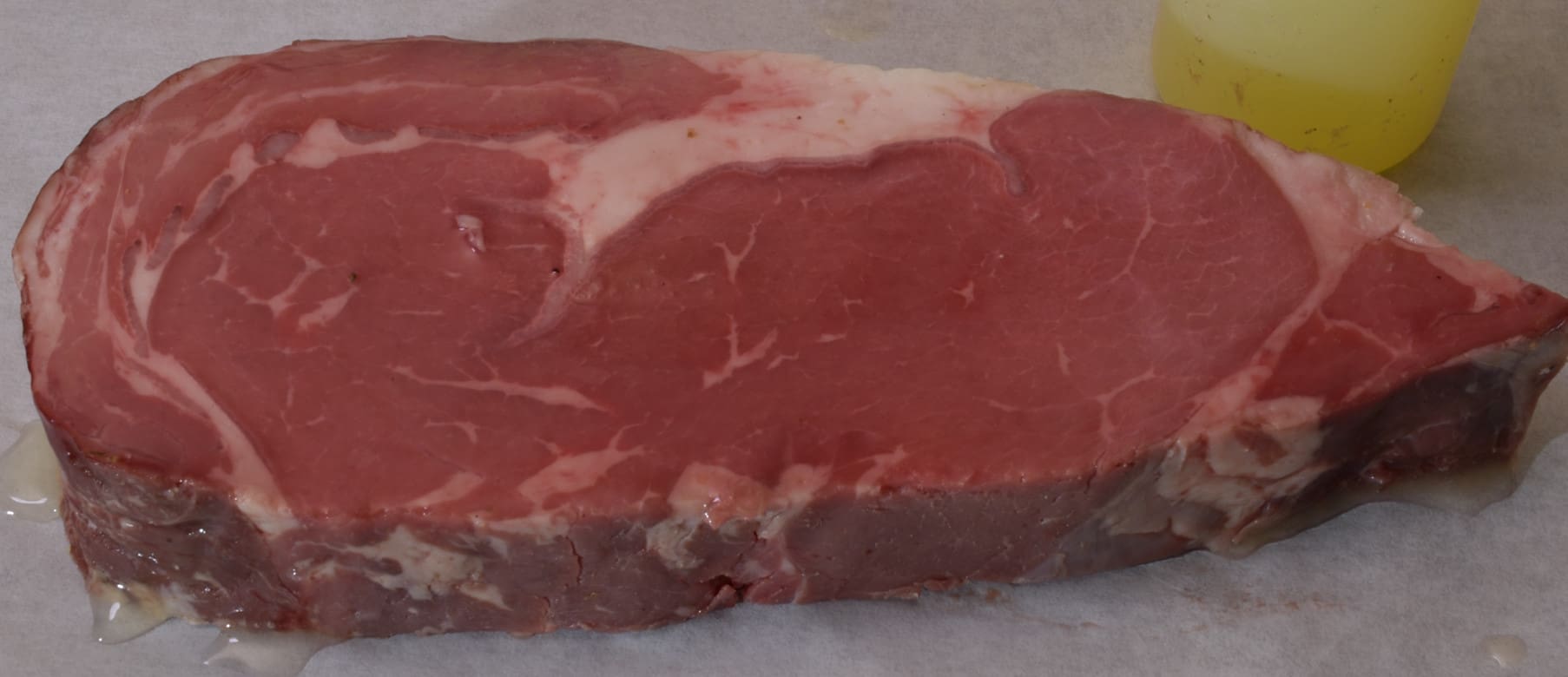
Coating the upper surface of the steak (as above) with a few drops of the egg white solution will help spices cling to the surface!
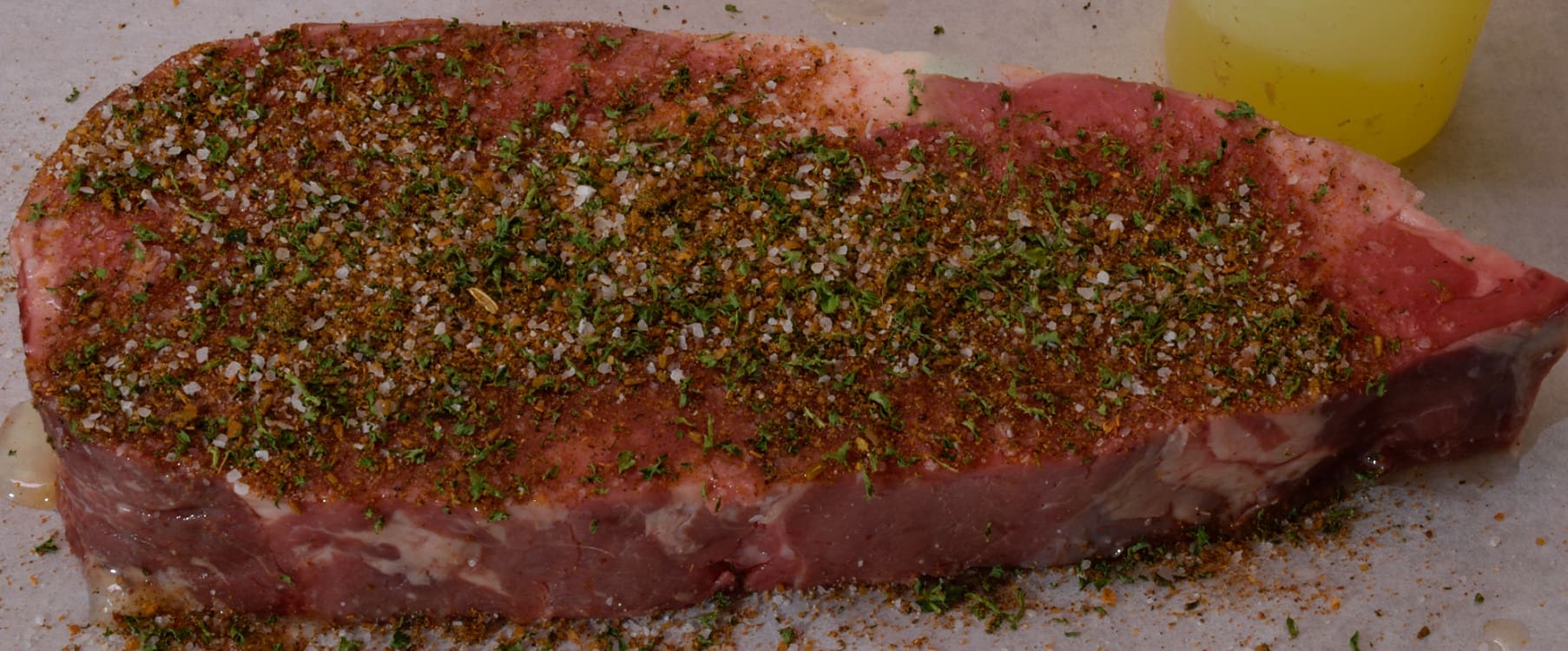
Season your steak as desired–for this demonstration I used our Cajun Spice recipe with a little extra parsley added. Pat the spices into the steak and turn it over.
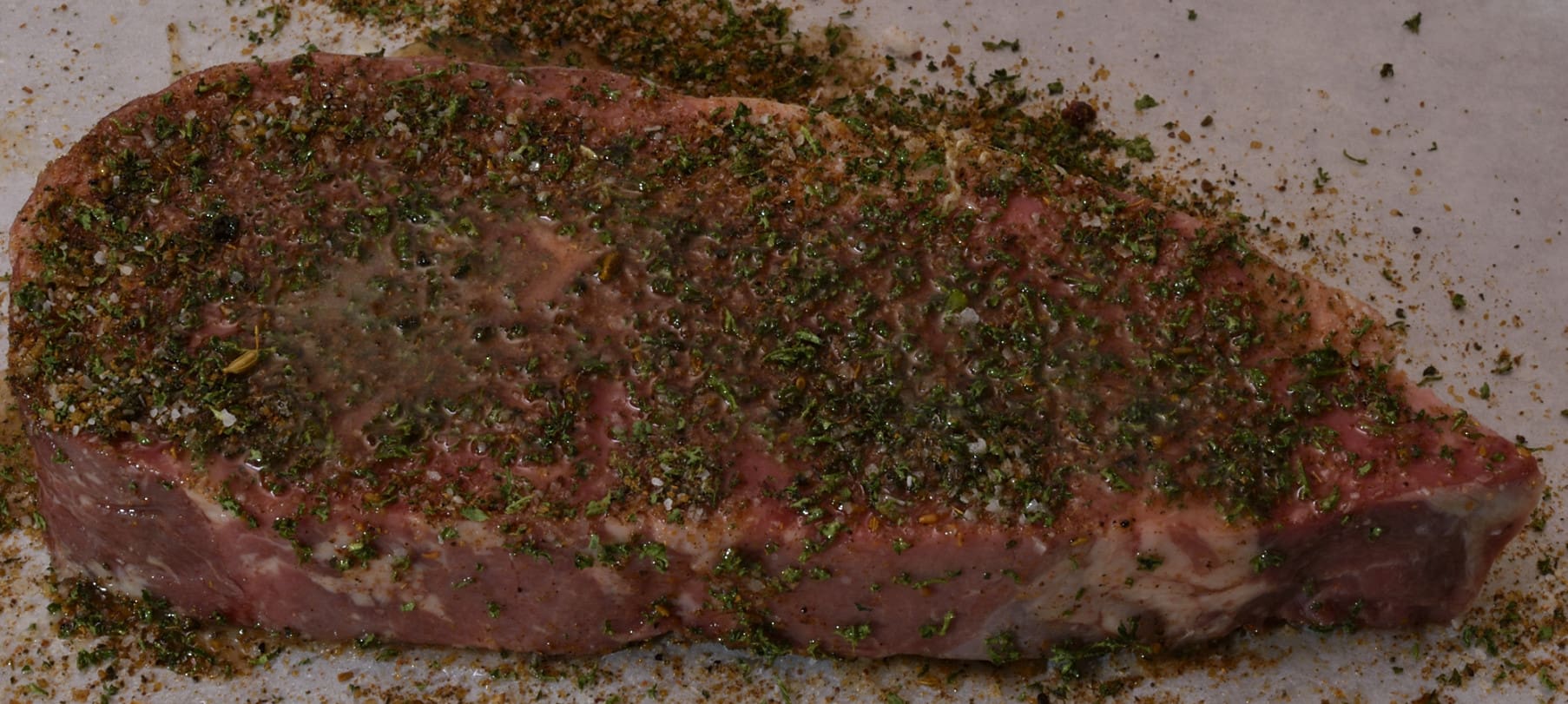
Repeat the process on the other side, and drizzle with a few drops of oil (or spray release).
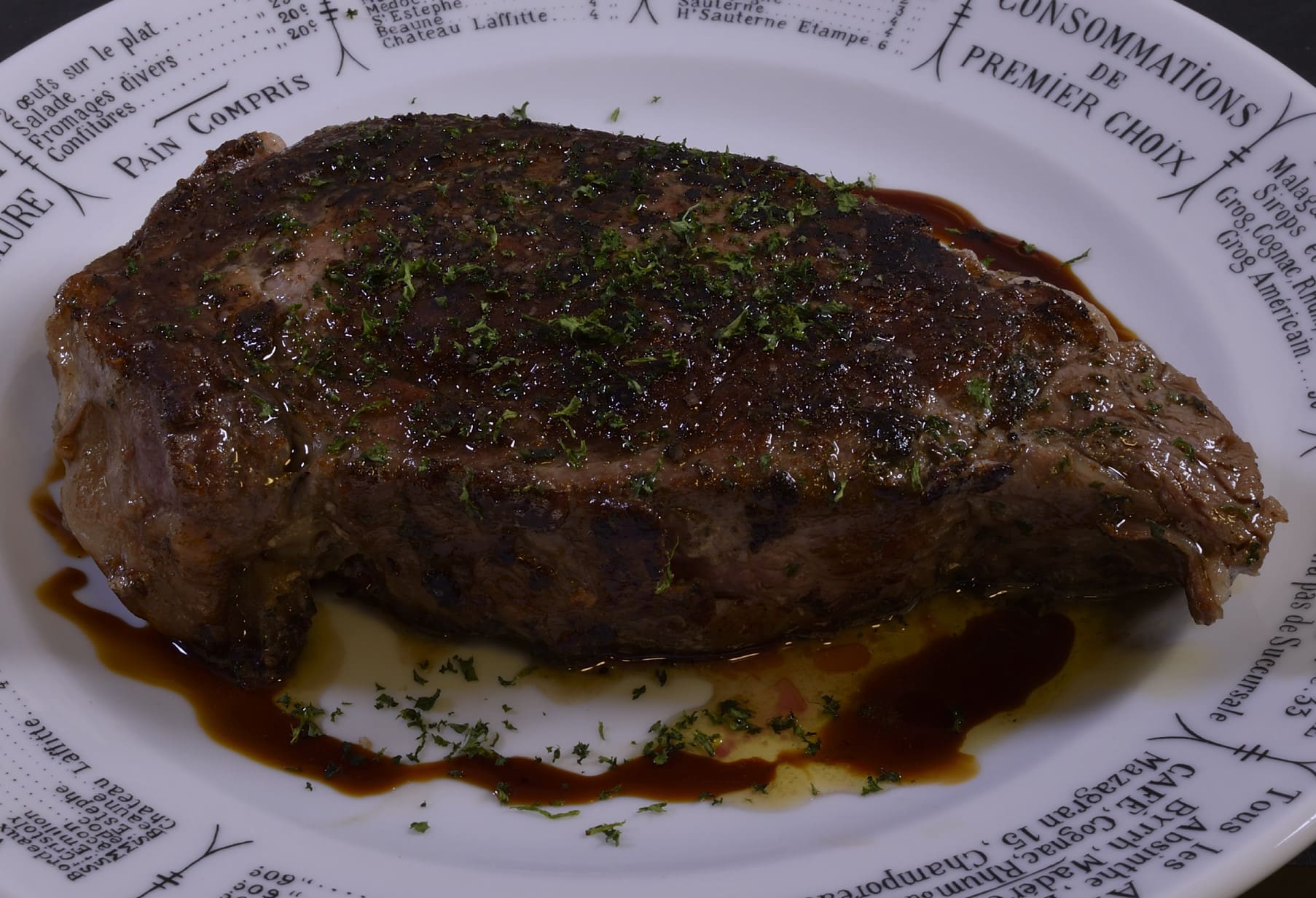
Preheat your skillet to approximately 375 F/176 C. I recommend searing one rib eye at a time and then just wiping out the pan with a dry towel in between steaks. Crowding items into a pan will cool the surface, giving you boiled steaks. Put a steak (oiled side down) in the pan. Listen–the pan should sizzle. If it hisses, the pan was not hot enough. If you hear a popping sound the pan is too hot, so reduce the heat to medium/medium high. After approximately thirty seconds, turn the steak over and gauge the degree of color. This is why we cooled the steak to 85 F/30 C. Once the desired effect has been created on the surface, the inside will be “mouth hot” as well. Stage the seared steaks in a warm place or an oven set on “warm” until you have seared all the steaks.
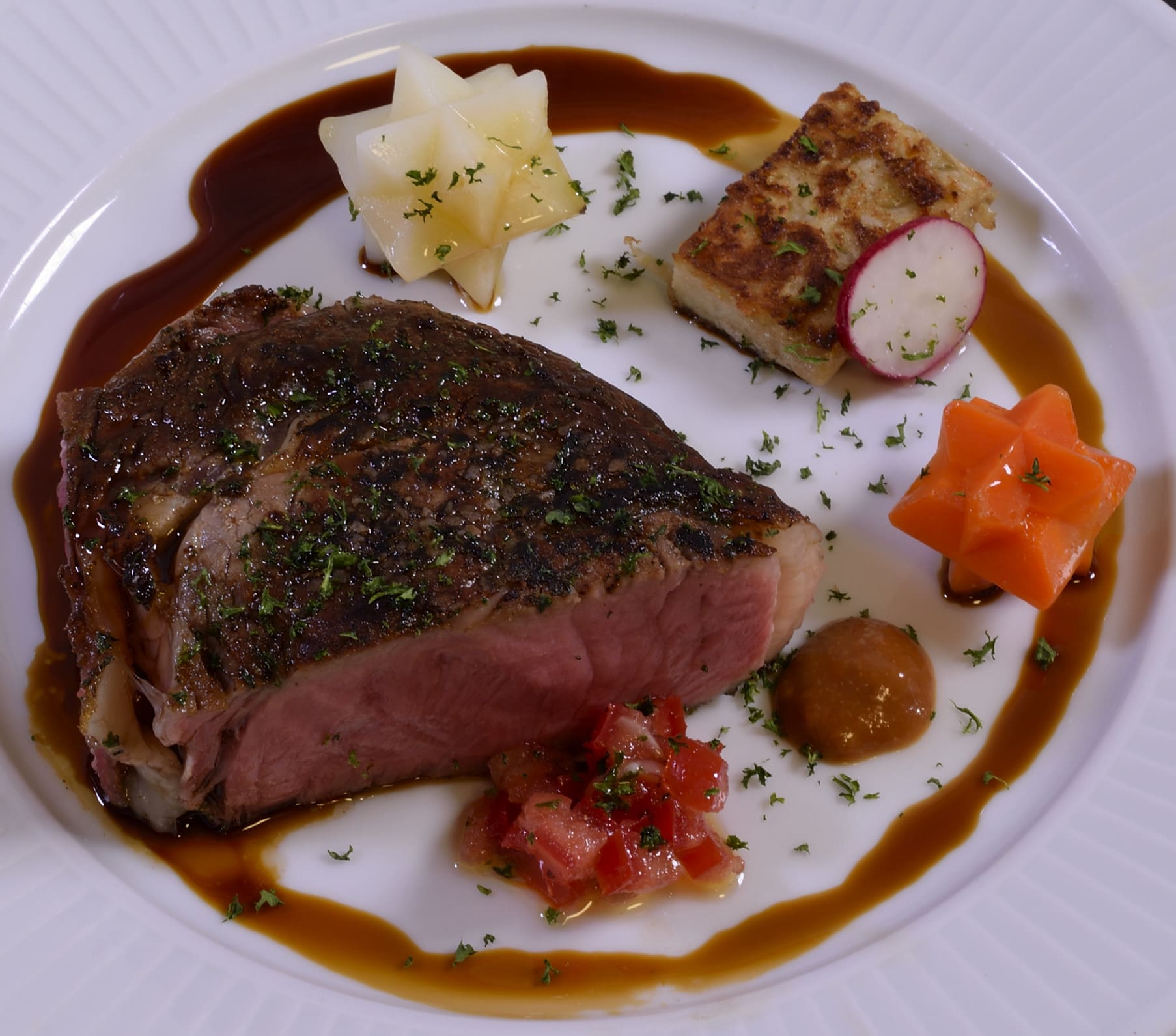
As discussed before, many people prefer there steaks more done or even quite WELL done. If this is the case reduce the heat and continue to cook in the pan until the desired effect is created. I do not advocate putting a lid on the pan under any circumstances because this creates steam which can alter the texture of the steak in an unpleasant way.

There is no shame in well done and there is no shame in ketchup, either. There is no accounting for taste and people should eat what they like the way they like it. People that look down their noses at the application of ketchup are the same people that eagerly apply other similar condiments provided the labels are printed in a foreign language. That’s my rant for the day.
Norm King

1